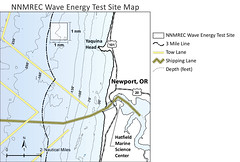 Grab your hiking boots and binoculars! This video will take you on a scenic and historical walk through the beautiful prairie headlands, forests, and grassy marshes of Cascade Head and the adjoining Salmon River estuary.
Grab your hiking boots and binoculars! This video will take you on a scenic and historical walk through the beautiful prairie headlands, forests, and grassy marshes of Cascade Head and the adjoining Salmon River estuary.
Ever heard of Pixieland? Kami Ellingson, from the Siuslaw National Forest, will take us on a guided tour of the complex history of commercial and residential developments that once threatened to pave paradise.
Stay on the trails, because that little blue violet up on the headlands feeds the Oregon silverspot caterpillar, one of four threatened or endangered animal species that live here. The Nature Conservancy’s Debbie Pickering tells us the butterfly’s story.
Back in the marshes, NOAA Fisheries scientist Dan Bottom describes the history of a massive habitat-restoration project, in which dikes were removed from the estuary in the hope of improving salmon runs. Western Oregon University Professor Karen Haberman shares her Sea-Grant sponsored research in the marsh–an unusual focus area with surprising consequences.
And finally, Eric Vines gives us a tour of the Sitka Center for Art and Ecology, one of the many recreational opportunities at Cascade Head.
The full program is available on DVD from the Oregon State University Marketplace
Exclusive: Watch a short featurette not included on this DVD: Salmon River Marsh / Undergraduate Field Experiences (about 2 mins)



